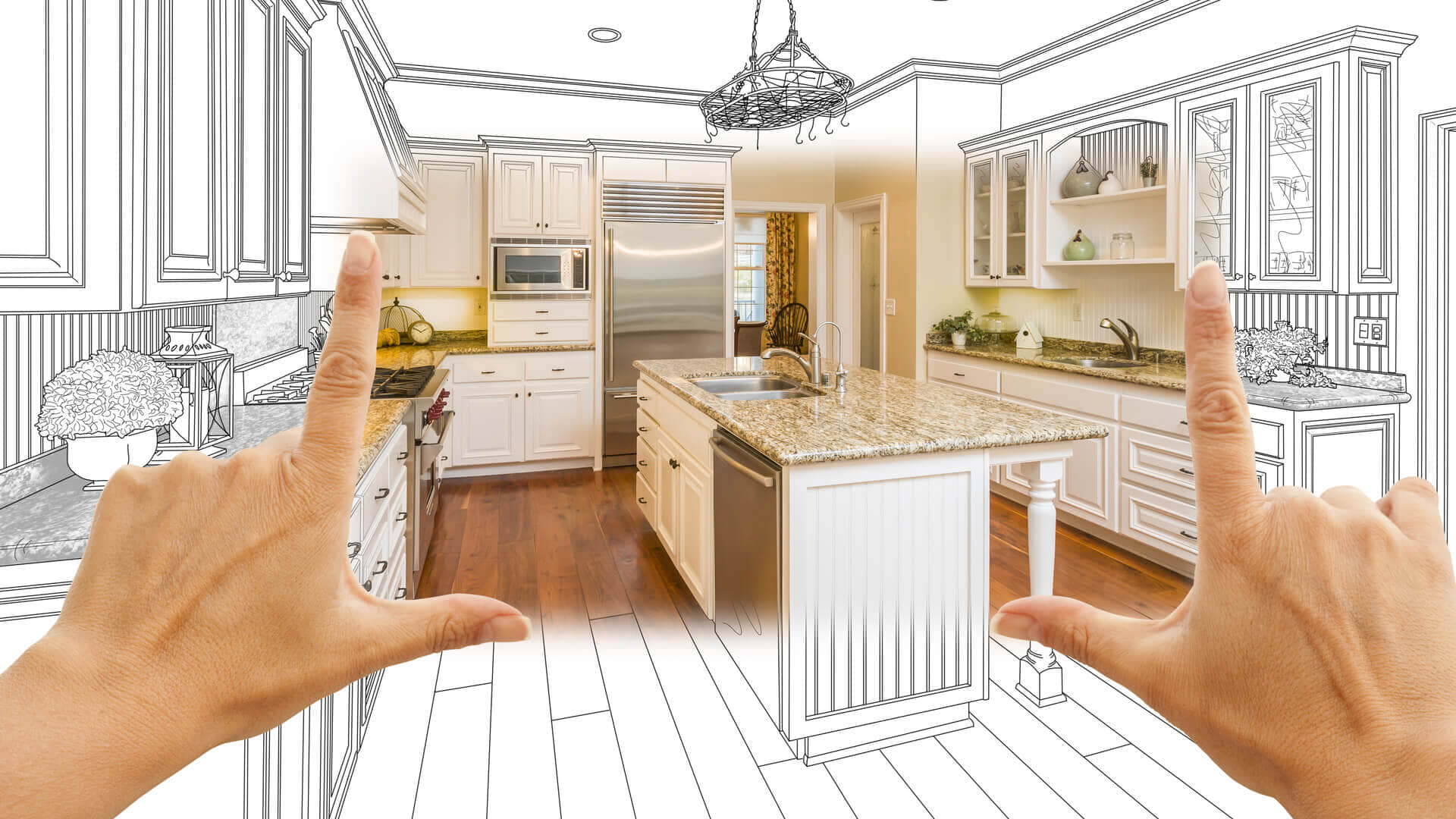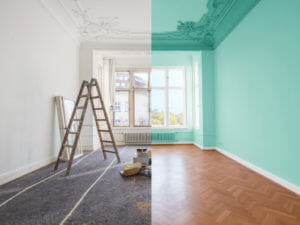What Are the Differences Between an Architect and a Designer?
Whether you are building a brand new home or renovating your current property, the subject of architects versus designers will undoubtedly come up. Many homeowners still find themselves unsure which profession is the best to work with for their particular project. Are designers only good for painting and decorating? Do architects only see the world in terms of structure and not aesthetics?
Architects and designers are actually very similar in their working processes and love of beautiful, yet functional layouts. But there are a few differences between them that you should know before deciding who to trust with your project. In this article, and this week’s episode of the How to Home Podcast, we take a closer look at the roles of both architects and designers, the differences between them, and how to choose the right professional for your particular project.
The Role Of an Architect

Architects are responsible for designing buildings from the foundation up. Typically, architects start the process for these structures’ development by meeting with clients and discuss their needs and requirements. This will involve an examination and study of the construction location, its immediate surroundings, and any risks of flooding or subsidence.
Once this initial phase has been done, the architect will begin to draw up a design, either by hand or using a computer illustration program. These preliminary sketches are then run past the client to see whether any revisions are desired.
The design will always take into account the safety and general needs of both the current occupants and future owners, should the owners ever wish to sell their home.The design should also aim to honor the client’s aesthetic and functional desires. The design and revision phase can vary in length. Many projects can get stuck in this phase for some time if the clients are indecisive.
Once the design has been agreed and approved, though, the architect will then take the drawings and begin to compose a series of detailed construction drawings to be used by the contractors during the building phase. Bidding upon the project usually takes place when the construction documents have been completed. In most cases, the architect will meet with, supervise, and work alongside the contractors once a bid has been approved.
The Role Of a Designer

Designers work with both the home exterior and interior spaces in a very similar way to an architect. Designers can work on all varieties of indoor and outdoor spaces, from offices to restaurants, hospitals and private residences – just like an architect. Contrary to popular belief, designers aren’t used solely for decorating spaces, many are just as capable of planning construction as an architect.
Designers begin by speaking with the clients to determine their needs, tastes, and budget before beginning to draw up plans. They will usually design the space using a computer, but some designers still prefer to use pencil and paper. During this process, the designer will focus upon meeting the needs of the client while also doing all they can to improve the aesthetic qualities of the space they have to work with. This means they will take into account lighting, furniture, colors, and the practicality of the layout within the space.
The plans will be finalized and approved alongside consultation with the client, who may also be given material samples to choose from or authorize. Overall costs are now estimated, as well as the project timeline. As the implementation phase is taking place, the designer will oversee proceedings with the contractors and work to ensure the budget and timeline is adhered to as closely as possible.
What Are The Main Differences Between Architects & Designers?

As is evident from the above, there’s little difference between the roles of architects and designers. Both are responsible for improving the appearance and functionality of buildings and spaces, as well as communicating with clients and supervising the implementation process.
There is one major, and important, difference, however, between these two professions: education and licensing. Architects will have more industry standard schooling than a designer and must hold a state license in order to sell their services. Designers do not have to hold a license in most states, and there’s also less in the way of standardized qualification levels for designers, so you’ll find that quality varies among individuals.
That said, there are certification boards which designers can join should they wish to boost their professional standing, but they are not mandatory. The American Institute of Building Design is one example of a professional board which offers certification to designers.
Another difference between architects and designers is that designers tend to focus their services on the interior of buildings, but this isn’t always true. Designers are equally able to work with homeowners to design and implement renovations to the exterior of their property too. When it comes to critical structural changes, however, architects are usually best placed to make decisions.
Selecting An Architect or A Designer

Deciding whether an architect or designer is best for you really depends upon your own individual circumstances and the scope of your project. Both professions are capable of producing beautiful designs and truly enhancing the aesthetics and functionality of your property.
If the outer structure of your home is already built, a designer is likely the best option for you. On the other hand, if you require your home to be designed and built from scratch, it stands to reason that an architect will be the most sensible choice. When it comes to budget, using a designer is generally more cost-effective. Their rates are usually lower than highly-qualified architects, and unless your project involves major structural upheaval, an experienced designer will often suffice.
Of course, there are some instances where it may make sense to work with both an architect and a designer. If you have a very large project (and budget), you might want to recruit the expertise of an architect for the practicality and functionality of the building exterior and structural design, as well as a designer for the all-around aesthetics.
Finding The Best Architect or Designer

Of course, whether your project is big or small, it is imperative that you find the right person for the job. No matter what the scope of the project, you should always make the time to meet with and interview the potential architect or designer before moving forward.
You should ask to see any previous work similar to that which you have in mind and also request a list of references. Asking them what their advice would be for your particular project is also a great way to gauge how experienced and enthusiastic they are about their work.
If they cannot provide references or a portfolio, you should probably steer clear. Any reputable professional should come to a consultation meeting fully expecting to be asked these questions. If they appear unwilling, this isn’t a promising sign. If this happens, you should either end the relationship there, or do further investigations before deciding.
In the case of architects, you should check that they are state licensed to practice. You can check the website of the National Council of Architectural Boards (NCARB) to search for a particular individual and their license status. You can also check out the American Design Drafting Association (ADDA).
You can easily find local designers and architects by simply entering the professional you are looking for into a search engine alongside the name of your state or city. It is also a good idea to ask friends, family and neighbors if they could recommend someone. Overall, your choice should be based firmly on the relevant qualifications, trade experience, enthusiasm and portfolio of the architect or designer.
Last but not least, you should choose someone with whom you feel you can maintain a good working relationship. If you pick someone who has an unpleasant attitude or is generally disagreeable toward your ideas, your project will become stressful and be at greater risk of something going wrong.
Final Thoughts
As this article has shown, architects and designers are both highly creative and skilled professions which can work wonders with your project. They both will take the time to listen to your needs and draw up a design which meets your desires, as well as work closely with your contractors to ensure the finished result matches your expectations.
There are some projects where one profession is a better choice than the other. Completely fresh builds or renovations which involve serious structural changes are best suited to the skill-set of an architect, while aesthetics, redesigns, and surface refurbishments will be better left to the expertise of a designer. Whichever professional you choose, you must ensure you do your due diligence before handing over any cash or signing any contracts.




